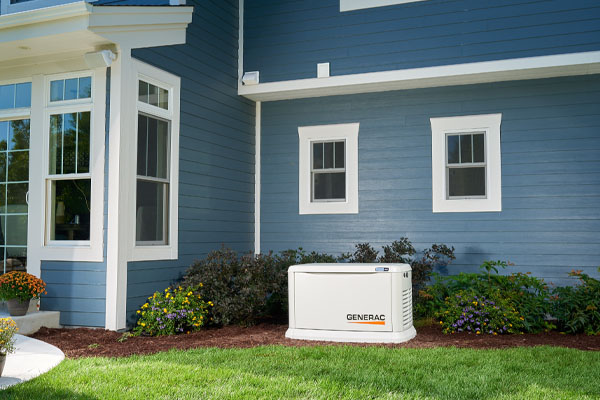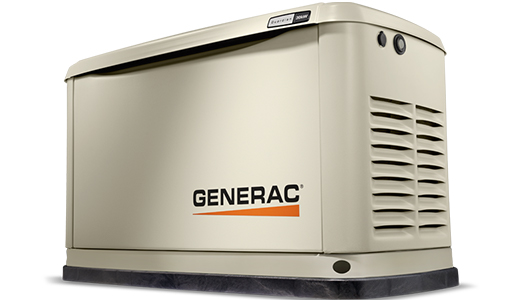How To Size A Standby Generator?

Generators are equipment you can use to supply power to your home during blackouts or if the power supply isn’t available in your area.
There are different types of generators available on the market, each with different wattage and requirements. Among the most common types are whole-house generators. These also are available in different sizes, depending on your power requirements. With this, many ask us “How to size a standby generator?”. In this article, we answer this common question.
What Are Whole House Generators?
Contents
As the name implies, whole-house generators (also called backup, on-demand, and standby generators) serve as a backup power supply that can keep your home running despite power outages caused by man-made errors or disasters.
This type of generator is the most ideal to use during prolonged outages. They can power all the devices and appliances in your home whenever you need them, and that includes your HVAC systems, too.
Because they can be used any time they’re needed, they are also referred to as emergency generators. They are generally big and are installed in an area outside the house or business.
These generators are very reliable and can provide peace of mind to users, adding a fundamental value to your home. Because they are designed to work automatically, you don’t even have to go out of your way to turn them on.
When the standby generator detects that there’s a power outage, it will start transferring power almost immediately. Once the power goes back, it turns off on its own, too.
There are a lot of ways that these generators can help give you the best comfort:
- They can power your refrigerator to prevent your food from spoiling.
- They ensure that your security system keeps on running, keeping your whole family safe.
- If you work from home, you won’t miss work.
- They keep you comfortable by allowing HVAC systems to run during summer or winter.
As you can see, these machines can bring a lot of advantages. However, before you purchase a whole-house generator and schedule a standby generator installation, you must first determine proper generator sizing.
Your whole-house generator must have enough power to run all your appliances, especially those that use a lot of energy, like your air conditioner. However, every home has different power needs.
What Is Standby Generator Size?
The size of generators does not refer to their dimensions; although you do need to have the appropriate amount of space on your property. Instead, it’s mainly based on the generator’s electrical output.
With that said, you must know how much power is needed to run your home before you even purchase a generator.
Electric output is generally measured in watts or kilowatts (kW), wherein 1 kW is equivalent to 1000 W. Keep this in mind because many people still get this wrong, especially when they try to figure out the right size to get.
Without knowing the correct electric output you need, there’s a high chance that you’d get a generator that is too small for what your home needs. This causes the generator to overload as it supplies more than it can handle.
When this happens, the generator will turn off automatically even if the power hasn’t gone back yet. This can also cause the generator to get damaged and shorten its lifespan.
But would it be okay to buy a generator with a larger size than what you need? Also no. If you get a large generator, you’ll be spending more money for the unit to run.
Because of this, it’s important to figure out the right standby generator size to meet your home’s power needs.
How To Size A Standby Generator?
So, how do you size a standby generator? Fortunately, it’s quite simple. Grab a calculator, a pen, and paper, and do the following:
Identify what devices you want to stay running despite having no power—for example, TV, dishwasher, dryer, washing machine, lights, etc. Grab the manual for the bigger appliances and try to find how much running wattage they need. Once you find the number, multiply it to three. After that, list the starting wattage, too. Add up all the numbers to get the total wattage you need the generator to have.
Now, we did mention running wattage and starting wattage, but what do these two mean? Well, the starting wattage refers to the initial load you need to start the electrical appliances. Some appliances that have high starting loads are compressors and motors. The running wattage, on the other hand, refers to the load it needs to keep the device running.
So, if you’re looking for the wattage needed for each appliance, you can use this formula below:
(Starting Wattage x 3) + Running Wattage = Total Wattage
For example, if a refrigerator has a starting load of 700 W and consumes only around 300 W when running, using the calculation above, here’s how you get the total wattage:
700 (Starting Wattage) x 3 = 2,100
2,100 + 300 (Running Wattage) = 2,400 (Total Wattage)
Now, this is for the refrigerator alone. If you wish to run only the refrigerator, your generator has to meet this kind of value. Do the same calculation for the other appliances and electrical devices you have to determine the total wattages of each. After that, add those numbers up to know what size of generator to get. Now, do note that these are just minimum numbers. As possible, make some small allowance so that the generator can keep running and not overload.
Do I Need Professional Help To Determine Accurate Standby Generator Size?

Although computing the right size of generator you need is easy, it can be time-consuming. Plus, if you’re not used to doing this, the calculation can go wrong. And most of the time, even just a tiny mistake would be enough to cause the generator to overload.
That’s why we still highly recommend that you call for a professional to help you determine the right generator size to get.
By hiring a professional, you can ensure that all your appliances and devices are counted before the generator is even installed. This saves you from the trouble of getting the sizing wrong.
With a professional, you can rest your mind because it’s ensured that wiring and installation are done correctly. This will also give you the confidence that the generator will function during a power outage and that it won’t have any problem running all your appliances.
Whole-house generators also need maintenance, so make sure that you hire a professional to check that your generator is always in excellent condition.
Conclusion
The idea of installing a whole-house generator is great. However, you need to ensure that installation is executed correctly.
For this reason, calculate the total wattage of all the household devices you need to use even during a power outage to get the sizing of your generator right. You must also confirm that your calculation is correct to prevent your generator from overloading.
To save yourself from any stress, it’s best to call a professional for help. Don’t worry about the complex calculation and going over it repeatedly to ensure that it’s correct. Let a professional do it to acquire the best results and guarantee your family comfort despite blackouts.
Call Lawes Company For Superior Backup Generator Services

Lawes Company has been the leader in generator installation services in New Jersey for many years. We offer a range of services including generator installation, maintenance, repairs, and replacement. Our trained and licensed service contractors are well-versed and up-to-date with new HVAC and generator technologies. If you want to avoid the inconveniences of a power outage and ensure safety and comfort for your home and family, call Lawes Company today. We offer free, in-home estimates, and all of our work is backed by a guarantee.
Contact us now at (732) 741-6300 to find out more!